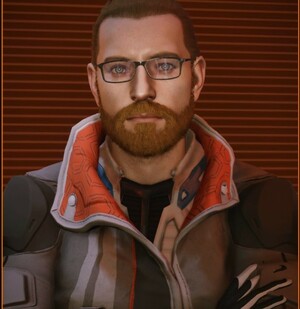Canonn Challenge Entry 11: Exploring Guardian Bubbles
24 Oct 2021Scopelx
When I awoke from cryo I was aboard the fleet carrier Giant Survey in the northern section of the Inner Orion Spur. After catching up on all the news from the Bubble, I'll admit I was feeling torn. Apparently there have been recent technological breakthroughs that will enable explorers to land on atmospheric worlds for the first time and investigate the life found on them. I wanted to be close enough to civilization to acquire these technologies when they are released but I was eager to be in the chair and finally explore again. I stared at galactic maps of various phenomena and pondered my next moves, finally settling on making a visit to the Guardian bubble centered on HEN 2-333. It is an area I've been meaning to see and not prohibitively far from human civilization should I need to fly back. And given that it is one of the largest Guardian bubbles ever discovered with a radius of 750 light-years, it presented ample opportunity to track down the remaining varieties of brain trees on my list. This area of space also has a fairly dense star field. There may be planets harboring undiscovered Guardian ruins, something that has been on my "exploration bucket list" for quite a long time.Puniceum Brain Tree
System: Graea Hypue JH-T d4-90

I was thankful these were local to this bubble, as they were totally absent in the Eorl Auwsy sector where I last encountered BTs. I wasn't wholly sure if I'd see ostrinum here again, and needing to travel to a third Guardian bubble just to get the second heat-loving variety would have been a tad embarrassing.
Aureum Brain Tree
System: Graea Hypue MN-R d5-67

Viride Brain Tree
System: Graea Hypue QO-N c8-8

The effort involved in trying to find viride brain trees reminded me a great deal of hunting for amphoras, only I was less certain I'd ever find these. I was elated when I saw them. In my experience landable rocky ice worlds are the exception rather than the rule. But landable and volcanically active? Very few and far between. And these are the only planets viride BTs are happy growing on. Add on top of that the necessity of a neighboring life-bearing world and a restricted temperature tolerance and you end up with an organism that is labor-intensive to find. But I can say that all those jumps I spent looking for them made the find all the more rewarding.
Lindigoticum Brain Tree
System: Graea Hypue HM-U d3-79

When I first came out here, I was fairly certain the viride variety would be the most difficult to find. I was wrong. I surveyed hundreds of systems and I could not find lindigoticum brain trees. It makes no sense, I'd found dozens of planets where they should have been able to grow but my search for them had come up entirely empty. I begrudgingly admitted defeat and looked up a system where they had been seen before.
Supplemental Viride Brain Trees
System: Eorl Auwsy UT-Z d13-296

Flying north toward Explorer's Anchorage, I briefly stopped by the Eorl Auwsy bubble again. This was the fifth system with the viride trees that I'd discovered on this trip, but this one was special. It is not often that I see moons orbiting their parent with this severe of an orbital inclination, so I absolutely had to stop and take in the view. It's vistas like these, and the knowledge that I'm the first human to see this particular one, that keep me from ever staying in the Bubble for very long. I also took this opportunity to grab scans of all the sister species of the octahedral pod I had previously discovered as well as their parent organism: the void heart.
Niveus Octahedral Pod and Void Heart
System: Shrogaae KK-A d983

Caeruleum Octahedral Pod
System: Shrogaae KK-A d1791

Viride Octahedral Pod
System: Shrogaae KK-A d90

Rubeum Octahedral Pod
System: Shrogaae KK-A d2672

